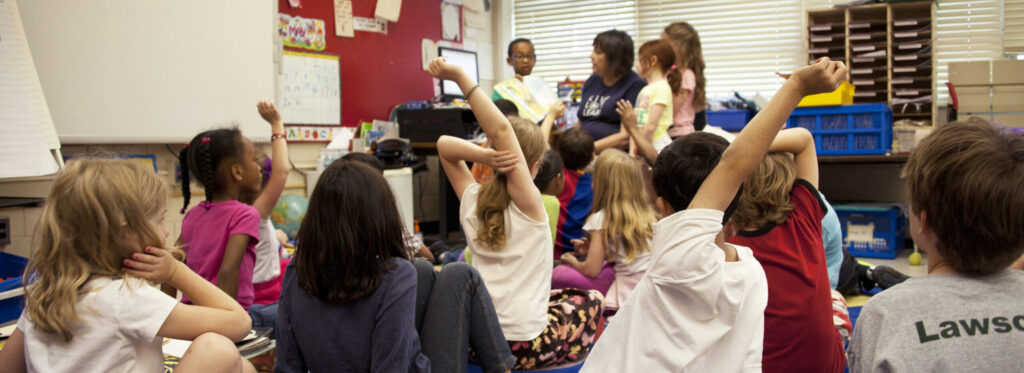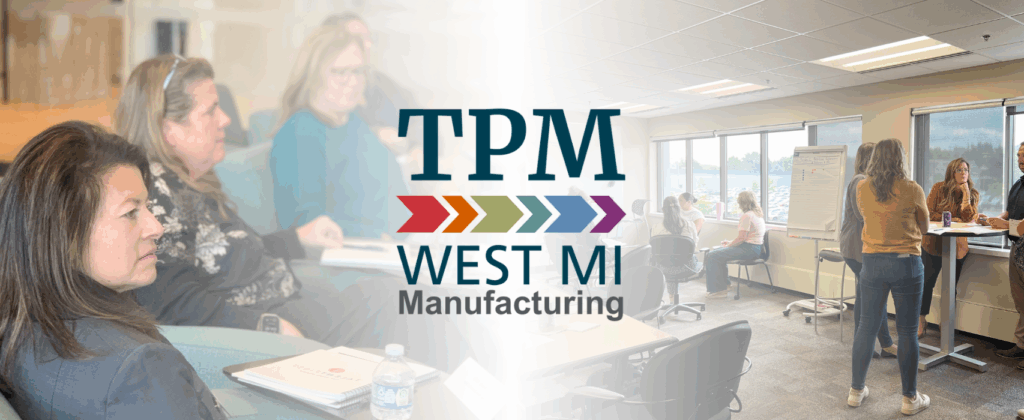Note: This is the fifth in a series of posts analyzing the nine key strategies cited in our 20/20 Vision Report.
One of the characteristics of a great talent system is how seriously it approaches career exploration, coaching and navigation.
While a good system may recognize the need for these activities, a great system deploys practical, evidence-based strategies that help students and adults alike travel paths to rewarding careers.
Strategy 5: Improve career exploration, coaching, and navigation.
The 20/20 Vision report, which can be read in full here, pointed out the need to help students and adults find the best job and career path suited to them.
This becomes possible when the community and businesses are extensions of the classroom, so career exploration and work experience help make school subjects relevant. One promising approach to this strategy already is under way in West Michigan, a collaboration between educators and the region’s workforce development agency, with key input from employers.
Assessing and teaching work-ready skills
The WorkReady workshops launched last year by West Michigan Works! were developed in partnership with the West Michigan Talent Triangle – the intermediate school districts of Kent, Ottawa and Muskegon counties.
The project began with a search for what employers really need in a job candidate. After listening sessions with a cross-section of industries, company sizes and geographies, and in consultation with talent experts, the following nine key work-ready skills were identified:
- Time management & punctuality
- Communication
- Teamwork
- Responsibility
- Workplace management
- Adaptability
- Reasoning
- Decisiveness
- Innovation
The initiative then relied on the curriculum expertise of the ISDs to develop an assessment for these skills, a series of workshops to address gaps, and a post-assessment. Job-seekers who demonstrate proficiency in the first five skills receive a WorkReady certificate. Proficiency in the remaining four skills – which demonstrate potential for growth and are the hardest to find by employers – earns a WorkReady Plus certificate.
How this relates to career navigation
Brittany Lenertz, talent solutions director for West Michigan Works!, explains that one of the keys to developing career pathways is for job-seekers to build a profile with evidence of skills they can show an employer. The WorkReady certificates help demonstrate qualifications for higher-demand jobs while also removing bias from the hiring process and instead emphasizing coaching and career pathways to show evidence of skills.
Finally, identifying the work-ready skills that employers prize most helps to develop a common language among educators, job-seekers and employers.
“The concept of ‘soft skills’ has always been kind of mysterious,” Lenertz said. “If we can do this research and break down what employers need and want, and find the things that are similar, we begin speaking the same language and teaching people what that is, and demonstrate those are skills you can learn.”
Since October, the WorkReady has issued 264 certificates. Results are undergoing a third-party evaluation to assess potential for sharing the model with employers and community partners.
Consistency from K-12 through employment
Jason Pasatta, director of Innovation Services for Ottawa Area Intermediate School District, said educators are building on the WorkReady collaboration to develop a progression for teaching employability skills that begin in kindergarten.
Using a human-centered design approach, teachers from across the region come together to form Networked Improvement Communities by:
- identifying and developing methods to help students become proficient in specific employability skills
- testing those practices in their own classrooms
- collecting data on the effectiveness
- reflecting on the results and revising the practices
The initiative started with teachers in grades 4-6, and will proceed with cohorts for second, third, seventh and eighth grades. The goal is to have cohorts of teachers working on employability skill practices in all grades by summer of 2021. This will include working with post-secondary institutions to identify how they can expand on the work being done within the K-12 system.
Going from good to great
Efforts like these demonstrate how progress is possible with collaboration, a focused approach, evidence-based principles and careful evaluations.
As one of the stakeholders said in a comment for the Vision Report: “If we’re all looking for someone else to solve this very serious problem, it’s not going to get solved. It’s going to take all of us working in concert, and first recognizing there’s a problem, and second, recognizing what is my role in it and how can I be part of the solution.”
This is how we accomplish our defined strategies, including improving career navigation, coaching and exploration, and this is how we go from good to great.


